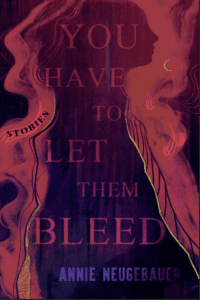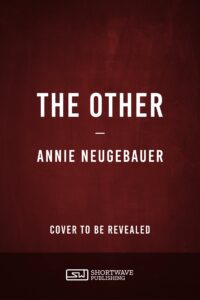Hey guys! Just a quick note before today’s post to let you know that I got a very happy story acceptance last week. I’m thrilled to share that my literary horror story “So Sings the Siren” will be appearing in Apex Magazine! If you missed the news, be sure to follow me on my Facebook page (where I share most news first, so feel free to set me to “see first” to be in the know) and on Twitter @AnnieNeugebauer. And I’ll be sure to share here and everywhere as soon as it’s available for you to read. 🙂 Okay, on to today…
The Setup
When I set out to reorganize my poetry by charting all of my poems in a massive spreadsheet (The Giant Chart O’ Poems, as it’s come to be called), I did know what I was getting into. Really. I knew by looking at my poetry folder that I had over 500 poem files. I also knew that, due to my all-or-nothing attitude and passion for checking things off my list, I was at high risk of working nonstop for a week until it was done and/or I was dead. So I did the responsible (reasonable) thing and paced myself. I started on January 3 and finished on February 27, which came down to about a dozen poems per workday. It was quite an experience.
So what do I mean by “chart” my poems? Well, it might make more sense if you understand how poetry contests work. The state and national contests that I try to enter poems to every year offer 100 and 50 categories, respectively. Each category has its own set of rules, with various line length limits, subject prompts, form types, etc. Can you imagine sitting down to pick out 50 to 100 of your poems to best suit all of those specifics? And can you even believe I did it for YEARS by simply… scrolling through my giant folder of over 500 poems, scanning them, and assigning them based largely on memory?
No wonder I dreaded contest time every year. (Then, after all that choosing, there’s still the tedious processes of copy-pasting, formatting, printing, and mailing, but that’s a rant for another day.) Since I actually do use these contests to earn money and publish poems (i.e., it’s part of my job), I knew it was time to organize the chaos. Who better to organize the chaos than…
Chaos Organizer Woman!
Okay, I’ll work on my superhero title, but y’all hopefully know by now that this is kind of my thing. (Relevant: check out my recent post on LitReactor about organizing your writing files, plus all of the handy free documents available at The Organized Writer, including a poetry submissions chart to keep track of what you’re sending where.)
The Nuts and Bolts
So I set out to tame the beast by putting every single poem I have into a spreadsheet and filling out the following columns for each: published (Y/N), form (Y/N), type of form, rhymed (Y/N), length (in lines), speculative (Y/N), genre, funny (Y/N), category tags (key words), quality rank (1-6), current status (on sub, to edit, ready, trunked, published), available (Y/N auto-formulated based on answers for status + published), and date written.
A few of these might seem slightly redundant, but they’re the way they are based on function. I need a form yes or no and a form type because sometimes I search for a specific form, such as a Shakespearean sonnet, and other times I just have to use free verse or any form, etc. Rhyme, speculative or not, and form or not are important in regular poem submissions as well, since many markets are anti- or pro- these specific things.
I’ve since utilized the chart in my national contest submissions, and the results are in. It was amazing. What a contrast! Definitely worth all the work. First of all, I can sort each column in various ways, so right off the bat I can hide all rows that are unavailable (on sub, already published, trunked, etc.) so I don’t accidentally slot them in. Then I can choose to sort by rank – sending out my strongest poems first – or by line length to make sure I’m under the limit, or even by category tags. Need a poem about cats? Keyword “cat” pulls them all up. Pretty cool.
Admittedly, things will need tweaking over time, and of course I’ll have to maintain the chart by adding new poems as I write them and updating when something goes out on sub or comes back. But by and large, it’s one of the more satisfying and practical uses of my organizational insanity to date. 🙂
To boot, going through my poems and looking at them through a wider lens taught me lots of interesting things, which I thought I’d share for the curious.
Lessons Learned
The biggest and most maddening reality is this: There is less correlation than I’d like between the quality of a poem and the likelihood of it being published yet. Of course, the ranking of a poem from 1-6 (1= best, 2= great, 3= good, 4= solid, 5= ok, 6= weak) is subject to my opinion of my own work, but still, I’m a fairly honest self-assessor, and even allowing for teacher’s pets and self-doubt, the rank of any given poem shouldn’t be more than one or two points off, right? Yet of the 58 poems I’ve had published so far, 17 are lower than “good” and only 7 are among my “best.” It’s certainly frustrating to feel like the poems I’ve had published don’t represent my strongest work. To be fair, the most-published ranks were “good” and “great,” but it’s maddening how many of my best pieces still haven’t seen the light of day.
Another interesting lack of correlation: There’s not nearly as strong a connection as I’d have guessed between whether a poem is a form and whether it utilizes rhyme. I’d assumed that most traditional forms = rhymed poems and most free verse = unrhymed, and that is still more true than not, but there were far more exceptions than I anticipated. Turns out I love infusing free verse and created forms with rhyme, internal and otherwise, and that less of the traditional forms than I was thinking require it. Go figure.
Speaking of ranking the quality of a poem, I also learned that not all useful poems are “good.” I discovered this when I decided to add an extra option to my “status” column: “collection.” I kept coming across weaker-ranked poems that I wasn’t actually willing to officially “trunk.” (To trunk a poem means to take it out of your options, basically, or pretend it never happened – like sticking a piece of paper in a trunk and closing the lid.) Some poems serve as transitions, connectors, contrasts, or simple story-beats within one of my poetry manuscripts. So while not a showstopper on their own, they still serve as necessary parts of a whole. That was good to realize.
One of the biggest lessons wasn’t so much a new lesson as a reinforcement of something I’ve always known: so much of categorizing writing is tenuous, subjective, or malleable. Countless poems ended up with multiple “genres” listed, for example. Because maybe it’s several at the same time, or maybe it becomes an entirely different beast when looked at through a different lens. (I have one poem that started out as horror and ended up as comedy, for example.) Likewise, I had to add “ish” to my “yes” and “no” options for both the “funny” and “speculative” columns. As most writers likely know quite well: genre and other such designators are both useful and limiting.
Perhaps the most delightful lesson I learned was how unbelievably good it felt to delete some of the poems I hate. Sure, I had a “trunk” category, but I had dozens of crappy old whatevers that weren’t even worth trunking. The kind of things I’d be embarrassed for people to read if I died – teen angst and random failed experiments and poems from world views I’m shocked I ever held. You know the sort; they’re the ones you scroll past extra quickly without looking. I’ve always assumed I would save everything, but there was nothing salvageable from those. Deleting them felt like shedding pounds. I absolutely loved it.
Another not-learned but reminded lesson: I have too many poems. I mean, five hundred and change is a lot of separate creative works to juggle. If I wanted to have all of them out on submission all the time, even assuming I only sent to markets that accept five poems at once, I’d have to have over a hundred-market rotation! So… I will never catch up. I already kind of knew this simply because at any given time over the past years, I’ve had far, far more poems not out than out. I always felt frustrated/guilty about that, but when I saw the numbers that starkly, the overwhelmed feeling shifted. Okay, so I know I can’t ever catch up. Next best thing: prioritize. This frees me to focus on my best poems. I don’t need to spend time revising weak poems or sending out ‘good enough’ ones for consideration; I can just write new ones, polish my favorites, and send them out to the markets I really want to work with. Ah, I feel more relaxed already.
And the biggest, most obvious thing I learned from charting over 500 poems? I should have done this from day one. As with any type of mess, it’s only overwhelming if you wait until it gets bad. Charting one poem at a time takes only moments, so if you’re a prolific poet, I highly recommend that you learn from my crash-course and start your own Giant Chart O’ Poems now.
So poets, writers, and otherfolk (sounds more magical that way, doesn’t it?), have you ever undertaken a project similar to this? Was it a success or a disaster? Care to share what you learned from your experiences? Comments welcome!
Share this:





I am inspired! Though I don’t have nearly as many poems in as diverse forms as that. But I do the same thing — just scan through the files to choose a few that mesh well together for a submission. It’s dumb. I should make a chart. (And yeah, I feel like there are way more in the “past trunking” category that I should just say goodbye to. oof.)
Yay! Thanks! I’m sure you’d love having a chart too. “Past trunking” is a good term for it. (I actually have a poem about burning all of those “past trunking” things, haha.) Let me know if you decide to tackle it; I’d love to hear how yours turns out! Also, I’d be happy to send you mine as a starter template if you want the formula, etc.
Awesome post! I don’t write poetry and yet I found this so interesting. 🙂
Aw, thanks Regina!
I love spreadsheets! I use them for my book-blogger/reviewer list and for FB group promos. (I used to do agent queries & subs, too, I don’t have to query or sub now.) Interesting about your correlations, or lack thereof. I wonder if it’s due to the peculiarities of editor taste or to venues that might have a lot of (or little) competition. Awesome job, Chaos Organizer Woman!
Thanks, Lexa! 🙂 You know, I was thinking about that more, and I wonder if it’s not just that I’m more choosy with my best work. Whereas I might send a good poem to lots of places without hesitating, I usually “start from the top” with my best ones, so I’m sending those to bigger, slower, more exclusive markets. That combined with the factors you mentioned might explain it.
If you’re picking the big exclusive venues for your best work, it might indeed explain your lack of correlation result. The scariest place for me was Glimmer Train. Too scared to even sub there! lol
Oh man, I’m scared of Glimmer Train too. Haha! I sent them a couple of stories when I was brand new and didn’t know what was going on; they weren’t even the type of things GT publishes. A few years later when I realized how goofy I’d been, I was too ashamed to send them anything else. >.<
Yeah, I think that's part of it. The bigger/fancier the market, the longer the response time (usually). So whereas any given poem might go to 2-10 markets before it finds the right home, at the really big places that might mean 2-10 years of waiting. Ugh.
First of all, that picture is absolutely hilariously perfect for you:) Second, you are amazing and the most hard-working, organized person I’ve ever known!
Lolcats to the rescue! Hehe. And thank you. <3 <3
Though I don’t have many poems, I would like to try something like this to cut down the time it takes to find worthy, applicable subs. I need your organization bug to bite me. I always seem to begin some major organization project and then get to feeling as though I’m just using it to procrastinate on writing. However, I did use your scene chart spreadsheet to chart out the chapters in one of my novel rewrites, and it helped me see patterns similar to what you’ve mentioned here, like stronger vs. weaker chapters, what perspectives I was giving the most weight, and it showed me where in the story’s timeline key events happened. So that organization project was very useful, despite initially using it to procrastinate on proceeding with my rewrite. 🙂
Well it sounds like now is the *perfect* time for you to start a chart! Since you don’t have that many poems yet, it won’t be so hard to get one going, and then you’ll never have the massive undertaking I did.
I know exactly what you mean about the procrastination. That’s why I gave myself a daily limit on this — so I couldn’t let it take over all the more pressing stuff. I guess for each organizational thing, we just have to step back, assess, and be honest with ourselves about whether it’s really worth the time value or not. I always joke that my house is never cleaner than when I have a big, difficult project to finish. 😉 For me, the functionality of this chart made it well worth the time, but for you or other writers who don’t sub so many poems, it might not be. That’s fine too!
I’m so glad my scene chart helped you out! That’s awesome!
Ugh, I’m not that organized! I know someday, I might have to be though. Glad it can be done!
Well I’m certainly the weird one here, haha! It’s just a way of life for me. 🙂
Not weird at all! Some people are just better at things like organizing than others! I do organize to a point but keeping track of that many poems would prove a catastrophe for me. I need to do a better job of keeping track of my stories and poems. I just have an aversion to spreadsheets etc. Lol.
That’s funny; I actually have a bit of a spreadsheet aversion myself. Undertaking this big chart was quite a daunting task, but I learned a lot about Excel doing this one. I almost always choose a table in a Word doc over a spreadsheet in Excel, but sometimes with large amounts like this Excel is simply better despite my preference. =/ It can do all kinds of neat things a table just can’t. I’ll just chalk it up to learning a new skill.
Sounds like a good skill to learn! I may have to break down in the future and do so as well. I need someway to keep track of my stories.
Do you mean keep track of what you have, or of where you’re sending them? If it’s the latter, I have a submissions chart in The Organized Writer you might want to check out. (And it’s a table, not a spreadsheet, so win-win!) https://annieneugebauer.com/the-organized-writer-2/short-story-submissions-chart/
Pingback: Writing Links 4/3/17 – Where Genres Collide
Thanks for the chart, Annie! I think I can adopt it for longer works as well!
Awesome! I’m happy to hear it. 🙂